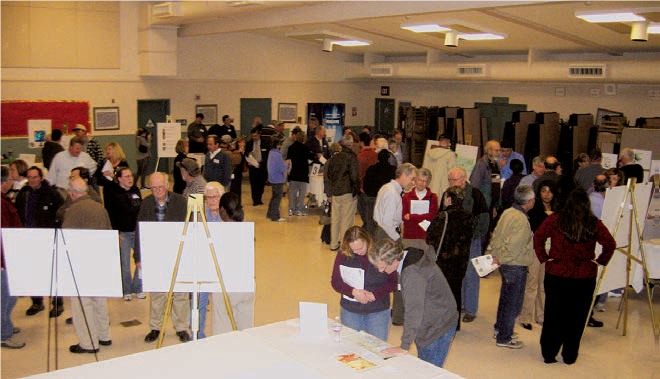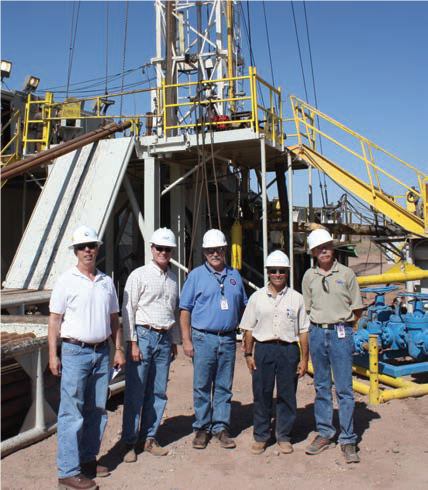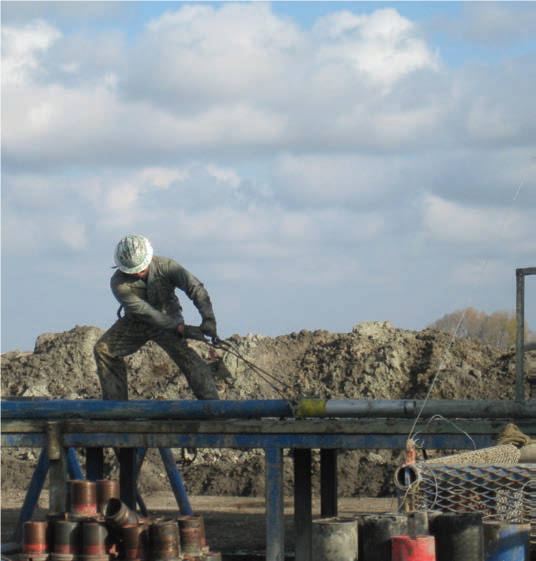Carbon Storage Atlas
- Project Highlights
- Unexpected Findings
- Advice for Storage Operators
- Project Outreach
- Project Commercialization
- Partners
The West Coast Regional Carbon Sequestration Partnership (WESTCARB), led by the California Energy Commission (CEC), represented seven states along the West Coast (Alaska, Arizona, California, Hawaii, Nevada, Oregon, and Washington), as well as the Canadian province of British Columbia. CEC worked in partnership with national laboratories, academic institutions, federal- and state-level regulatory agencies, private companies, and non-profit conservation organizations to research and identify potential approaches to capturing and storing carbon dioxide (CO2).
The WESTCARB region has diverse geologic storage opportunities. The seven states that comprise WESTCARB emit approximately 11% of the total CO2 emissions for the United States and estimated capacity in the region’s broadly distributed sedimentary basins is enough to store hundreds of years of CO2 emissions from industrial point sources. Opportunities for enhanced oil recovery (EOR) combined with long-term CO2 storage may be found in southern California and Alaska. Carbon dioxide storage in coal seams, along with enhanced coalbed methane (ECBM) production, may prove beneficial in Alaska, Oregon, and Washington. Source-sink matching studies indicate generally favorable distances between the region’s large point sources and potential sinks
WESTCARB worked with partners to develop geologic storage projects that represent important and promising source-sink opportunities in the region. In Arizona and Washington, WESTCARB focused on storage of CO2 from coal-fired power plants, which represent a large proportion of emissions in both states. In Arizona, WESTCARB worked to develop a field project in saline formations representing the most promising potential opportunity in the Colorado Plateau, while in Washington, CO2 storage in coal seams, along with ECBM production and saline storage, may be an important opportunity. In California, coal-fired power emissions are small, but gas-fired power and refinery emissions are significant. WESTCARB worked to develop two field projects, one incorporating a novel natural gas oxy-combustion power generator, and one a refinery in the Bay Area, both linked to saline storage in the Central Valley, the largest sink in California.
Important technical knowledge and experience in addressing potential risks of induced seismicity in carbon capture and storage (CCS) projects was gained by WESTCARB during planning studies for a field project in California. In response to a question from regulators asking about the likelihood of a magnitude three or greater event from the proposed injection of 6,000 metric tons, WESTCARB researchers analyzed existing natural seismicity data, characterized faults, and carried out reservoir modeling to predict the pressure increase on existing faults due to the proposed injection.
WESTCARB partners worked with multiple agencies in different states to successfully obtain permits for field projects involving CO2 injection. Arizona presented a potentially challenging regulatory hurdle because the state protects all groundwaters, regardless of level of salinity. For the Cholla field project, WESTCARB researchers provided technical data, including reservoir simulations, and worked with partners in conjunction with federal and state regulators to obtain both a Class V (Underground Injection Control [UIC]) Experimental Injection Well permit from the Environmental Protection Agency (EPA) Region 9, and a temporary aquifer protection permit from the Arizona Department of Environmental Quality.
Working through CEC, WESTCARB researchers provided important technical information needed by lawmakers, contributing to the foundations for policy recognizing CCS as an option for reducing greenhouse gas (GHG) emissions in California. In 2007, WESTCARB researchers contributed to a report prepared in response to legislation, Assembly Bill 1925, asking for recommendations on how the state could “develop parameters to accelerate the adoption of cost‐effective geologic sequestration strategies for the long‐term management of industrial carbon dioxide.” In 2010, WESTCARB researchers served on the Technical Advisory Committee to the California Carbon Capture and Storage Review Panel, and contributed to the Background Report accompanying the panel’s final report. This report was a resource document for the 2018 California Carbon Capture and Sequestration Protocol under the Low-Carbon Fuel Standard (LCFS).
One of the unique aspects of the WESTCARB region is the abundance of opportunities for terrestrial storage in forests. Development of such projects was supported by progressive policies in California, Washington, and British Columbia to reduce CO2 emissions. For example, California amended the Forest Practice Act of 1973 to ensure that the rules governing commercial forest harvesting considered the capacity of terrestrial storage to help the state meet its reduced GHG goal. WESTCARB researchers explored a number of options for carbon management through terrestrial storage, including afforestation of rangelands (including planting of fast-growing poplar trees), forest fuel-load reduction and possible subsequent biomass production, and improved conservation-based forest management. Results of the Phase II pilot in California showed that afforestation of rangelands and past fire sites has the potential to make a significant contribution to the state’s efforts to meet its GHG reduction goals. The studies also suggested that there would be strong support from private landowners for such projects.
The diversity, complexity, and site-specific character of public reaction to carbon capture and storage (CCS) and Phase II field projects was greater than anticipated. In the sparsely populated area around the Phase II Arizona Utilities Carbon Dioxide (CO2) Storage Pilot – Cholla Site, there was essentially no public opposition, though landowners wanted to be assured that their groundwater would not be impacted. In California, public reaction was mixed and very complex. Some non-governmental organizations (NGOs) were supportive of CCS, in principle, while others were opposed. Some members of the general public saw potential business opportunities while others mistrusted the intentions of participating organizations. Policymakers were surprisingly supportive of CCS, though slow to react. Public support was not universal, even for terrestrial storage projects.
The West Coast Regional Carbon Sequestration Partnership (WESTCARB) projects provided lessons learned and generated advice for new storage operators looking to develop a storage project site, whether geological or terrestrial:
- The risk that a site targeting a potential storage formation will turn out to be unsuitable is greater for sites outside of existing oil and gas fields. WESTCARB experience suggests that “wildcat”-type exploration in carbonates may be particularly risky. Potentially large heterogeneity in reservoir properties and structure need to be taken into consideration in site selection.
- It is important to engage stakeholders early and often. Characterization of public opinion, perceptions, and potential concerns can require specialized expertise and is important before engagement. The complexity of public reaction should not be underestimated. Providing timely and accurate information is important and can also require specialized expertise in communication.
- In tectonically active areas such as the West Coast, characterization and analysis of naturally occurring seismicity is an important and necessary part of site selection and characterization. Uncertainty in natural earthquake locations, based on data from existing seismic networks, can be high, which translates into uncertainty in determining the location of active faults. Site-specific seismic networks may be warranted at an early stage in order to better characterize faulting.
Public Outreach
The West Coast Regional Carbon Sequestration Partnership (WESTCARB) engaged the public in dialogue about carbon capture and storage (CCS), terrestrial storage, and the Regional Carbon Sequestration Partnerships (RCSP) Initiative through public forums, formal presentation sessions, community meetings, and focus groups in communities near proposed project sites.
One of WESTCARB’s primary goals was to promote public participation and education. WESTCARB worked with universities, trade associations, and environmental organizations to conduct public workshops on CCS. To further CCS education, WESTCARB supported the Keystone Center’s teacher trainings and regional professional development through the Carbon Tech Alliance. WESTCARB hosted public meetings in communities where field projects were proposed, and held its annual business meetings in Alaska, Arizona, California, Oregon, and Washington to encourage participation throughout the region. To give stakeholders a firsthand look at CCS technologies, WESTCARB arranged tours of project sites.
WESTCARB worked with researchers from the Energy and Resources Group and the University of California at Berkeley, who were interested in studying community and non-governmental organization (NGO) perceptions of geologic storage. In the first study, the researchers conducted focus groups in two
communities that were potential WESTCARB project sites in California. They concluded that communities wanted a voice in defining the risks to be mitigated and that in doing so, they were protected against the downside risk of government or corporate neglect. In the second study, the researchers found that NGOs’ views on CCS as a mitigation strategy varied considerably, and that these views were correlated with NGOs’ histories of activism and advocacy, as well as with their sources of
funding.
Permitting/Regulations
WESTCARB also provided technical knowledge-sharing to regulators and policymakers interested in including CCS technologies in greenhouse gas (GHG) mitigation compliance mechanisms. WESTCARB organized several CCS workshops in support of California’s biennial Integrated Energy Policy Report, an important guidance document for the state. WESTCARB researchers co-authored the Geologic Carbon Sequestration Strategies for California: Report to the Legislature in response to Assembly Bill 1925. In 2010, they served as technical advisors to the California Carbon Capture and Storage Review Panel, which was convened by state agencies to draft recommendations for CCS regulation. The Panel issued recommendations addressing key permitting, legal, and socio-economic issues for CCS in California. One of the recommendations was to designate the California Air Resources Board (ARB) as the responsible agency for air-related aspects of carbon dioxide (CO2) monitoring, reporting, and verification requirements. Subsequently, in 2016, ARB launched the development of the Carbon Capture and Sequestration Program. Over the course of two years, public workshops were held on topics including well integrity, monitoring, and risks of CCS, providing input for the CCS Protocol, which was passed as an amendment to California's Low-Carbon Fuel Standard (LCFS). The Protocol allows transportation fuels whose lifecycle emissions have been reduced through CCS to become eligible for credits. The Protocol includes accounting requirements for CCS projects, the steps to be taken in order to obtain Sequestration Site Certification, and requirements of a Testing and Monitoring Plan.
Sharing Lessons Learned
WESTCARB shared lessons learned by:
- Providing information on GIS-based maps of CO2 emission sources, geologic formations suitable for storage, and terrestrial carbon storage baselines and supply curves for various timeframes. Materials were available for audiences ranging from the general public to researchers.
- Providing project updates through WESTCARB’s annual meetings; the U.S. Department of Energy (DOE)/National Energy Technology Laboratory’s (NETL) Annual Carbon Capture, Utilization, and Storage meeting; and presentations at various technical conferences. WESTCARB’s annual meetings were open to the general public and sought to broaden exposure and facilitate education of the public and affiliated professionals. Presentations made at the DOE/NETL annual meeting and other conferences were for the purpose of sharing information with other researchers and professionals interested in CCS.
In addition, WESTCARB shared produced communications materials, including project fact sheets, meeting flyers, technical reports and papers, posters, news releases, and presentations from various meetings and conferences, by establishing a partnership website (www.westcarb.org).
Learnings About Outreach with the RCSP
Through all of their outreach experiences, WESTCARB learned that:
- Early engagement is important in communities.
- Groups for outreach should include elected and safety officials; neighboring landowners and tenants; businesses, civic, environmental, and religious groups; neighborhood associations; school teachers; and local media.
- Interviews, focus groups, or conversations can determine community concerns early on.
- NGOs are a trusted resource for the public.
- CCS projects tend to be better understood and accepted in communities where oil and gas production or natural gas storage are common, or where local educational institutions contribute to an understanding of subsurface operations, where project developers have an established presence and are trusted, or where benefits such as jobs creation or retention are aligned with community interests.
The projects conducted by the West Coast Regional Carbon Sequestration Partnership (WESTCARB) evaluated the region for carbon capture and storage (CCS) potential and sought to identify specific areas where CCS would be successful. Opportunities for long-term carbon dioxide (CO2) storage combined with enhanced oil recovery (EOR) have been identified in southern California and Alaska. Carbon dioxide storage in coal seams, along with enhanced coalbed methane (ECBM) production, may prove possible in Alaska, Oregon, and Washington. Terrestrial carbon storage is a popular option among the public and landowners.
WESTCARB characterized geologic basins and terrestrial storage options in the region for applicability to CO2 storage while also considering source availability, economic factors, and public and legislative support. WESTCARB served on panels and provided reports to state agencies in the region to assist in CCS regulation and policy for the region’s mitigation strategy.
When it comes to the future of CO2 mitigation, regulatory agencies and policymakers have acknowledged the potential importance of carbon capture, utilization, and storage (CCUS) technology to assist in meeting greenhouse gas (GHG) emissions reduction goals. Novel technologies with the potential to use industrially captured CO2, such as chemicals or biofuels synthesis and building materials production, can play an important role in regional GHG reduction, as well as in meeting other environmental objectives, such as air quality improvement, use of “green materials,” and reduced solid waste volumes.
The Future of the WESTCARB Region
WESTCARB characterization efforts have identified opportunities for commercial-scale storage in the study region. The region’s labor force includes people with the right expertise to support a CCS industry. The region is home to many small start-up companies, universities, and other research organizations developing innovative CO2 “beneficial use” technologies, ranging from building materials to biofuels to geothermal energy. The creation and retention of regional jobs are important aspects in developing CO2 utilization technologies and can help garner public support. The California Energy Commission (CEC) has already made some research and development (R&D) investments to support growth of this sector. More funding, possibly through cap-and-trade or Electric Program Investment Charge (EPIC) programs, would accelerate development of more cost-effective capture and innovative utilization technologies.
In addition, oil companies have tested CO2-EOR in California and have candidate projects awaiting the quantities of CO2 expected from future industrial capture applications. Furthermore, CO2-EOR opportunities have also been identified in Alaska. Carbon dioxide-enhanced natural gas recovery and the use of CO2 as a cushion gas for natural gas storage or for compressed air energy storage are less mature technologies that require further field testing and evaluation. The use of CO2 in geothermal power cycles is also in development and undergoing field validation. Collectively, these technologies could use significant volumes of CO2 captured at stationary sources in the WESTCARB region.
Greenwood Enterprises
Science Strategies
SFA Pacific
Cement Industry Environmental Consortium






